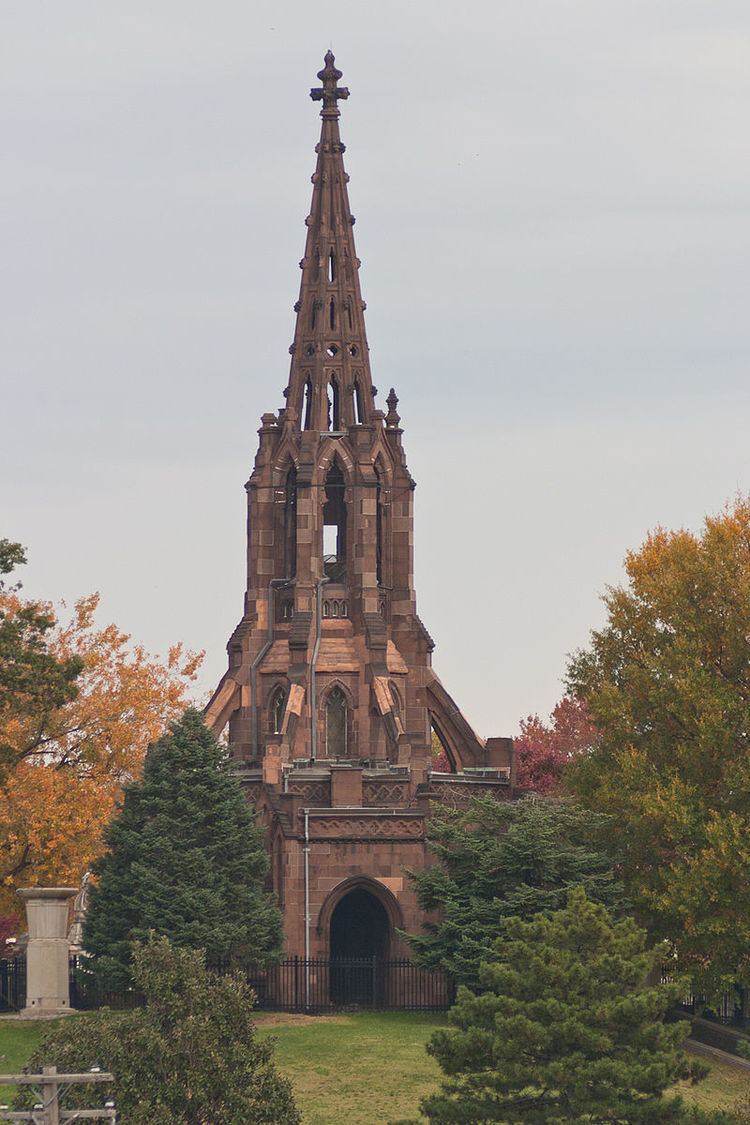John Rudolph Niernsee (May 27, 1814 – June 7, 1885) was an American architect. He served as the head architect for the Baltimore and Ohio Railroad (B. & O.).
He was born as Johann Rudolph Niernsee in Vienna, Austria and immigrated to the United States in 1837, at age 22. He apprenticed to Benjamin Henry Latrobe, II, (1806-1878), engineer and manager at the B. & O. and other railroads, (and son of another well-known architect, his father Benjamin Henry Latrobe, 1764-1820). In 1847, with James Crawford Neilson, (1816-1900), he formed the Niernsee & Neilson architectural firm that largely served the Baltimore and Ohio Railroad, (B. & O.).
He is credited with having mentored Ephraim Francis Baldwin, (1837-1916), another well-known Maryland and Baltimore architect (and formed the similarly locally-famous firm Baldwin & Pennington with Josias Pennington, [1854-1929]), who also designed buildings and stations for the Baltimore and Ohio Railroad (B. & O.).
During the American Civil War Niernsee served in the Confederate States Army as a Major.
Works by Niernsee or by the firm (with attribution) are:
Grace Episcopal (later called Grace & St. Peters) Park Ave & Monument st 1850-52 designed with NielsenEmmanuel Episcopal Cathedral & Eager St, 1857, designed with NielsenThe Green Mount Cemetery hilltop chapel, in Baltimore, Maryland, which he designed with Nielsen, is a Gothic Revival work.Baltimore's Johns Hopkins Hospital and the Johns Hopkins Colored Children Orphan Asylum.1855-56: St. John the Evangelist Roman Catholic Church (by Niernsee & Neilson), Baltimore. Listed on the National Register of Historic Places (NRHP) in 1982.1855: Saint Paul's Church, 102 N. Union St., Petersburg, Virginia (Niernsee & Neilson), NRHP-listed.c. 1855, Villa Anneslie, 529 Dunkirk Rd. Towson, Maryland (Niernsee, John Rudolph), NRHP-listed.1856 Baltimore and Ohio Railroad Camden Station, 301 West Camden Street, Baltimore, Maryland (Niernsee & Neilson)1868: Aigburth Vale, in Towson (by Niernsee & Neilson), listed on the National Register of Historic Places (NRHP) in 1999.1870: Churchville Presbyterian Church (Italianate clock tower by Niernsee & Neilson), Churchville, Maryland, listed on the NRHP in 1986.ca. 1870: Clifton Mansion, at Clifton Park, Baltimore (by Niernsee & Neilson), listed on the NRHP in 2007.The Greek Revival South Carolina State House, in Columbia, is another National Historic Landmark building which Niernsee designed, c. 1851, although full implementation was delayed. From 1888 to 1891, a time when much of the interior work was completed, it was in fact Niernsee’s son, Frank McHenry Niernsee, who served as architect. NRHP-listed.<-- Grace Church, Baltimore Sun Paper 12/3/1852 pg1—unclear fragment -->The Baltimore and Ohio Railroad Martinsburg Shops which he designed with engineer Albert Fink, were declared a National Historic Landmark in 2003.Not in date order:
Church of the Most Holy Trinity, 720 Telfair St., Augusta, Georgia (Niernsee, John Rudolph), NRHP-listedSt. Mary's Catholic Church (1858) located in the Edgefield Historic District, located along both sides of U.S. Highway 25 through the town of Edgefield, South Carolina (Niernsee,John R.), NRHP-listed.Emmanuel Church, U.S. Highway 301, Port Conway, Virginia. (Niernsee & Neilson), NRHP-listed/Evergreen House, 4545 N. Charles St., Baltimore. (Niernsee & Nielson), NRHP-listed.Martin's Brandon Church, Virginia Highways 10 and 1201, Burrowsville. (Niernsee & Neilson), NRHP-listed.Mount Vernon Place United Methodist Church and Asbury House, 2-10 E. Mount Vernon Place, Baltimore, (Niernsee & Neilson), NRHP-listed.Niernsee was buried at St. Peter's Catholic Church in Columbia, South Carolina.

